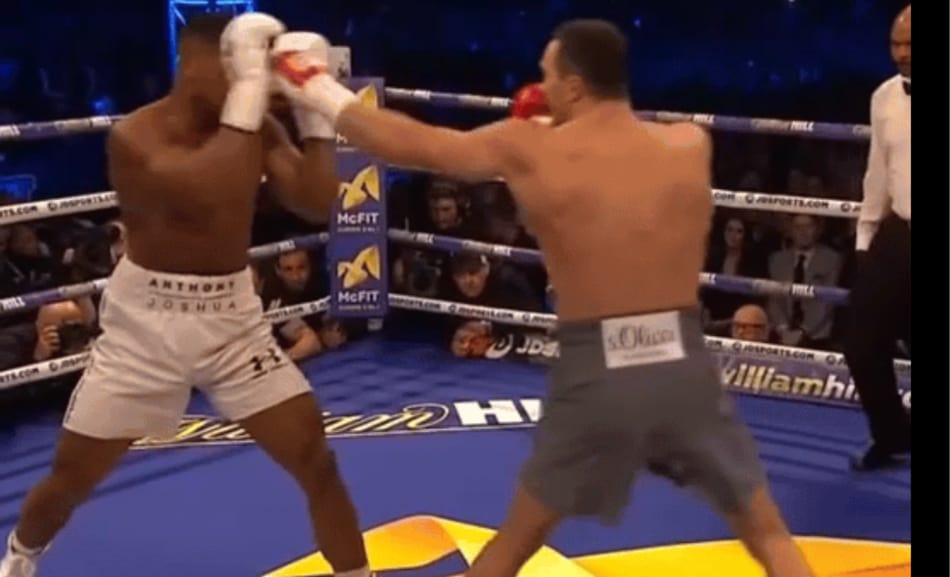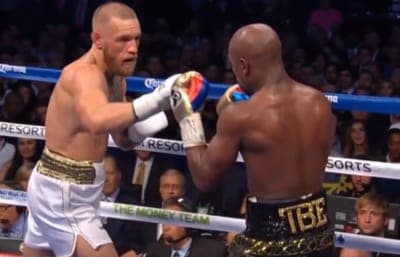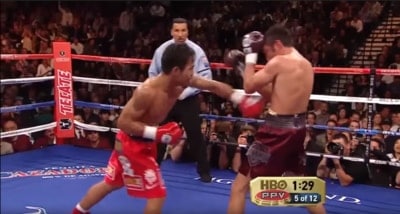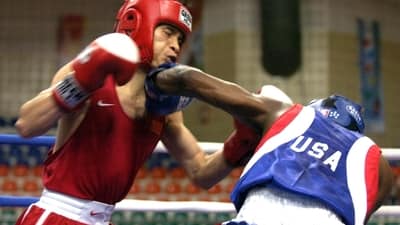
When it comes to the sweet science of boxing, there are several different boxing styles used by fighters when they get in the ring. Some of these include the aggressive, bobbing & weaving pressure fighter, the tough, rough and strong slugger, and the technical boxer.
When it comes to the last one, many people often wonder what exactly does a technical boxer does in the ring and what are the differences between that style and the others. This is something that I wondered myself when I started boxing. And because of that, I decided to make this article to provide a thorough answer to that question.
So what is technical boxing? It is a fighting style that emphasizes quick, effective footwork, pinpoint punching accuracy, and lightning-fast reflexes and hand speed. In essence, technical boxers emphasize the main objective of boxing: hit and not get hit, and take it one step further.
Many (but not all) prefer fighting from afar, preferring to use straight punches such as jabs and crosses, while at the same being adept at defensive techniques such as the shoulder roll and slipping punches. Technical boxers prefer to fight at their own pace, and they tend to have a long reach and effective defense.
They rely much more on their skills such as proper technique, speed, distance management and strategy than on physical attributes such as strength, power, and toughness (although often those boxers have one or more of those attributes).
It’s important to note that while technical boxing tends to be associated and used as a synonym for outboxing, or classic boxing, technical boxing can also be combined with other fighting styles such as pressure fighting to make a deadly hybrid that combines the pros of both types while eschewing the cons.
This is often seen in eastern European, Mexican, or South American boxers which tend to start using a more aggressive, but still technical style after a successful amateur career. This article will be talking about pure finesse or technical boxing though.
There’s a lot more to say about technical boxing. If you would like to know more about this style, including the differences between this and other styles, signature technical boxing techniques, and the best and most famous technical boxers ever, continue reading.
Technical Boxing Vs Other Styles
Even though most boxers start out as technical boxers because it’s the best way to get the basics of the sport, many eventually abandon it because of several reasons, including the personal preference for other styles. Below I will talk about the differences in technical boxing when compared to pressure fighters, counter punchers, sluggers and more.
There are several classic style matchups in the ring and there’s a point of discussion among boxing fans when it comes to this: Is technical boxing the best way to fight? And while that answer is going to depend a lot of the fighter using the style, I think we can point out several differences between these traditions. Some of these include:
Technical Boxers Tend To Be Faster On Their Feet
This is something well known among boxing circles. Since technical boxers tend to be both longer and a little bit lankier, they tend to have more developed footwork, which goes very well with the jabs and crosses they will use. This is unlike pressure fighters or sluggers, which might have more crude movement across the ring and be more flat-footed typically. Now, don’t get me wrong, some pressure fighters can be very speedy, but their footwork tends to not be as developed as technical fighters.
Speed has always been the calling card outboxers use against all other boxing styles, but especially with swarmers. The most skillful fine boxers will seamlessly dance backward across the ring, trying to avoid getting caught in the ropes, all while punishing any mistakes the enemy makes. This is all made possible thanks to precise footwork and pinpoint accuracy as I said above.
So to summarize, technical boxers will have superior footwork than other boxing styles, which can be an asset both defensively (dodging punches) and offensively (looking for angles of attack)
Technical Boxers Tend Not To Punch As Hard
Because of the implications of being a technical boxer, they tend not to punch as hard as sluggers or pressure fighters. Their reliance on the jab is a great way to maintain distance and controlling the pace between the fighters, but it’s not going to knock anybody out. Since many (but not all) technical fighters tend to focus more on the defensive side of things, their punches tend to be a little bit less committed to ensure the balance is not lost, but this also makes said punches less effective.
Because of this and the fact that many opponents they face tend to have granite chins, classic boxers tend to win their fights mostly by decision, and if they do win by knockout, it’s usually because of a well-timed shot ala Pacquiao-Marquez IV. Or because Corner Stoppage when their opponents can’t take any more punishment so they quit (like most of Lomachenko’s opponents) or by TKO (Technical Knockout) when the opponents just shell up and don’t hit back and the referee is forced to stop the fight.
Skill difference is also going to be a big determinant, but if faced against a tough slugger or pressure fighter, with a good chin, the classic boxer will probably be forced to win by decision.
Now, remember that we are talking about real classic boxers here (Mayweather, Whitaker, Rigondeaux). There are some boxer-punchers that will have the finesse associated with real technical boxers, but they tend to focus more on the offensive side, plus they tend to be bulkier too. These guys will punch pretty hard, but I don’t think they are a true classic boxer and thus what I have said above do not apply to them.
Technical Boxers Tend To Have Longer Careers
This is something that many boxing fans have noticed over time. And one of the reasons for this is that being a successful technical boxer is more dependent on skill & technique than conditioning. Now don’t get me wrong, proper conditioning is important for any kind of boxer, but because of the nature of their craft, technical boxers tend to take things just a bit easier.
Compare this with pressure fighting, a style of boxing where proper conditioning is absolutely crucial to achieve any kind of success. Many things have been said about how hard these swarmers/pressure fighters train, with Marvin Hagler famously running 6 to 8 miles daily and doing so while wearing army boots.
These guys train super hard, often focusing on sprints when running to improve intensity on the ring and generally having spartan training routines that most people wouldn’t tolerate. This intensity is very hard to keep up over the course of several years, and many young pressure fighters eventually develop into balanced boxer-punchers as the years pass, or worse, they quit the sport because of the style demands so much from them.
There’s also another reason why technical boxers tend to have longer careers, and that is because they are usually well versed in defensive techniques. Shoulder rolls, slipping, and parrying are all very common tools used by technical boxers, and they do a great job of ensuring they reach the distance.
It’s often said that fighters that avoid getting Koed or take much damage are able to stay somewhat relevant in the boxing world, even though they might not have the most impressive offensive skills. The reliance on defensive techniques will also seriously limit how much damage the boxer receives, both when sparring and on an official fight, and after the boxer stops fighting too. Chronic Traumatic Encephalopathy has the potential to affect any boxer, but especially those who do a poor job of defending themselves from punches to the head.
Technical Boxers Tend To Move Backwards
Technical boxers have the perception of being less resistant to punches because they tend to move backward, which can actually be a great way to mitigate the damage the opponent inflicts with their punches, but casual fans tend to interpret it as “running” or “hiding” when actually the boxer is doing it on purpose. Mayweather has thousands of detractors who think he can’t take a punch because of this when actually he has a pretty decent chin.
Fighting off the backfoot also has the added disadvantage of letting your opponent come forward, giving him the ability to leverage his punches. Many boxers do not really know what they are doing when they do this, and the result is a higher chance of getting beat by the more aggressive fighter.
Another interesting thing about the technical style of boxing is that some fighters (the minority of all technical boxers) are forced to pick it because they have weak chins. The reason for this is that the other styles – pressure fighters/sluggers really need to have great resistance to receive the inevitable punishment that comes when trying to get inside. So if the boxer can’t withstand those punches over several rounds, they need to use technical boxing to stay relevant.
A good example of that is the MMA fighter Alistair Overeem who became a technical striker, rather than an aggressive brawler, later in his career as his chin started to deteriorate.
Don’t get me wrong, most of the technical boxers have great chins, for example, Muhammad Ali who has never been knocked out or Floyd Mayweather who has never been dropped in his 50 pro fights.
Technical Boxers Signature Techniques
There are many techniques that differentiate technical boxers from other styles. Mastering all of this is important to make sure you really have success as a classic boxer. Some of these techniques include:
Shoulder Roll
One of the most lauded techniques of the last 25 years has been the Shoulder Roll. Also known as the Philly Shell, this technique was originally popularized by George Benton decades ago, and it was then used by boxers such as Floyd Mayweather Jr and Pernell Whitaker.
It consists of a special stance where you use one shoulder to block punches and the arm of the other side to also block punches and attack. The result is a well rounded defensive stance that invites open, reckless, but ultimately ineffective offense while putting you in a perfect position to counterattack. Every technical boxer should know how to do this stance and it’s super easy to learn and use in the ring.
The first thing that you must learn is the stance itself and the positioning. You are going to have the rear arm protecting the face and liver. The lead hand should be down protecting the other side of your body and the shoulder should be up, protecting your chin. Also, try to avoid squaring yourself up. You should have more of an European style side stance, with the back part of your body is well covered.
After this, you are going to simply pivot your body constantly. It’s ideal to get a friend to help you so that you get an idea of how this works, but in short, you are going to roll with the punches you receive, blocking them with your lead shoulder and back hand. If you do this correctly, most jabs and straights will not even touch your head. As I said above, this stance is perfect for counterpunching, and you should try to throw some punches back after you receive some!
For comprehensive how-to information on the shoulder roll, check this video.
Slipping
One of the key things that define technical boxing is their elusiveness, both on offense and defense. In fact, one of the best elusive techniques technical boxers use is slipping, which is when you slip your head to one side to avoid an oncoming punch. This is perhaps one of the most effective moves ANY boxer can make, not just finesse fighters, especially when done right.
But that’s the problem: most boxers can’t really slip effectively. This is a technique that takes a lot of skill and dexterity and of course practice, so it’s important that you apply this often when sparring so that you get the hang of it. To learn this technique, you are first going to practice your head movement when shadowboxing.
Ideally, you are going to adopt a defensive stance like the shoulder roll, and you are going to move your head and torso in a circular pattern. Try imagining an opponent throwing punches at you when you do it. Ideally, the opponent punches should slip by your head without touching it, while at the same time putting you in a great position to counter punch.
Another great way to practice slipping is with the double end bag. The key to do this is to make sure your head doesn’t touch the bag at all. Start by moving your head back when the bag comes at you. Ideally, the bag should be fast enough to force you to quickly jerk your head back. A few weeks of doing this should seriously improve your chops at this. After you get good at this, try slipping inside while putting you in a good position to retaliate.
Slipping is a must if you want to get good at this sport, and it’s the kind of technique that you will really get good at if you use it when sparring, so make sure you apply it the next time you do so.
Pivoting
Another very overlooked technique all finesse boxers should master is pivoting. This is a great way to find ways to attack at different angles while at the same time maintaining some distance from the opponent. Pivoting is done by keeping your front foot planted while you move your back feet to the right or left, depending on what you are thinking of doing.
Pivoting can be done both offensively and defensively. Defensive pivoting is usually done after throwing some punches to the opponent. Let’s say that you are fighting an opponent that is coming forward and you are almost at the ropes. In this case, you would throw a 1-2-3 combination, while at the same time pivoting to the left after throwing the lead hook. This helps you stay off the ropes where you are most vulnerable.
Another pivot technique that works great especially for southpaws is the pivot double-triple jab. This consists of throwing several jabs while pivoting either inside (orthodox fighters) or outside (southpaws) to look for a different angle of attack. Good southpaws will do this almost every fight against righties, and when done correctly, it’s a great way to shut off the opponent’s offense.
Pivoting can also be combined with slipping to create a lot of opportunities. For example, you could slip a right straight by going inside, while at the same time ripping a left hook to the body, and then pivoting to the left side to either avoid the ropes or follow the hook with more combinations.
Notable Technical Boxers
Technical boxing proponents will point out at the sheer number of world champions that profess using this style. Notable technical boxers include Floyd Mayweather Jr, Pernell Whitaker, Muhammad Ali, Joe Calzaghe, the Klitschko brothers, Andre Ward, Vasyl Lomachenko, Erislandy Lara, Guillermo Rigondeaux, Bernard Hopkins, and Willie Pep, among others.
Note that some of these fighters haven’t been technical boxers for their whole careers. Some of them switched styles or became hybrids after a few years of fighting.




Hey can you do an article on slugger style, snd what skills they must master.